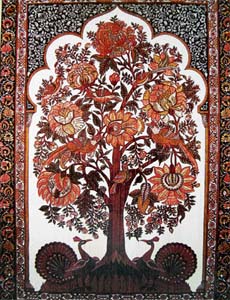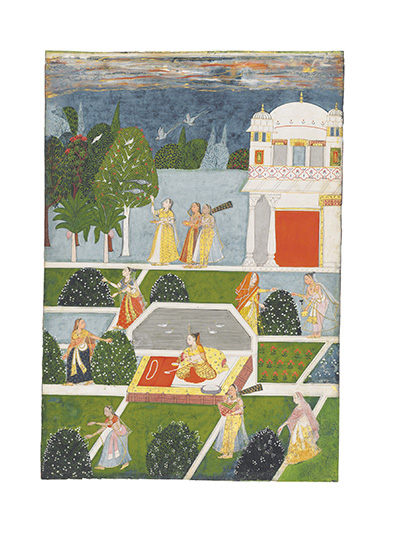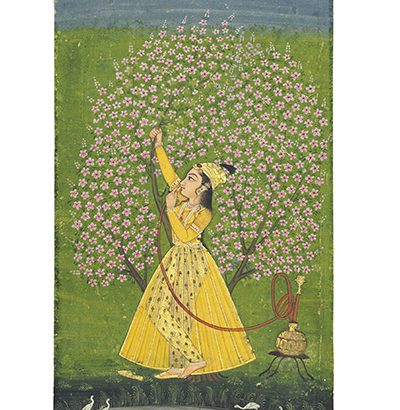Trees, flowers, shrubs and leaves are a recurring motif in many types of Indian folk art. Major schools in region-specific art and architecture have for centuries incorporated flora and fauna in their depictions of life, work and play. Foliage creates a certain mood against which important deities, royalty, palaces and shrines are created. Trees also have immense socio-religious significance in Indian folklore and iconography. The roots of the tree have a hold on the underground, and the trunk connects the earth and the heavens, a manifestation of a symbol that transcends all three spheres of the earthly realms. The leaf, bud, fruit and flower of the tree represent birth, life and death—the complete story of life.

Tree of Life hand painted in Kalamkari style.
They are attributed human values and even offered prayers in some cultures for bringing health and prosperity into the lives of their worshippers. Buddha attained enlightenment under the shade of the bodhi tree and in Rajasthan and Gujarat temples are often built in dense forests to implement a successful forest management system and as a show of reverence for nature-the preferred abode for deities.

Women picking flowers for puja; the trees and shrubs evoke a feeling of serenity.
The use of greenery in these types of art also serves as a humble reminder, that trees form a fundamental component of the human life cycle. Our dependency on them whether for food and shelter or just plain aesthetics is deep-rooted.

A specimen of Madhubani art, with green foliage as the predominant backdrop.
In tribal art and handicraft, trees are the central subject of the visual stories created by drawing and painting on paper, textile and pottery; and the timber from trees forms the base material for the creation of daily household items. Tribal communities in India and across the world share an intimate relationship with nature and are deeply respectful toward forests and wildlife. Images of the sun, the sky, birds, animals and trees abound in the oral history and folklore of such tribal communities as well.
